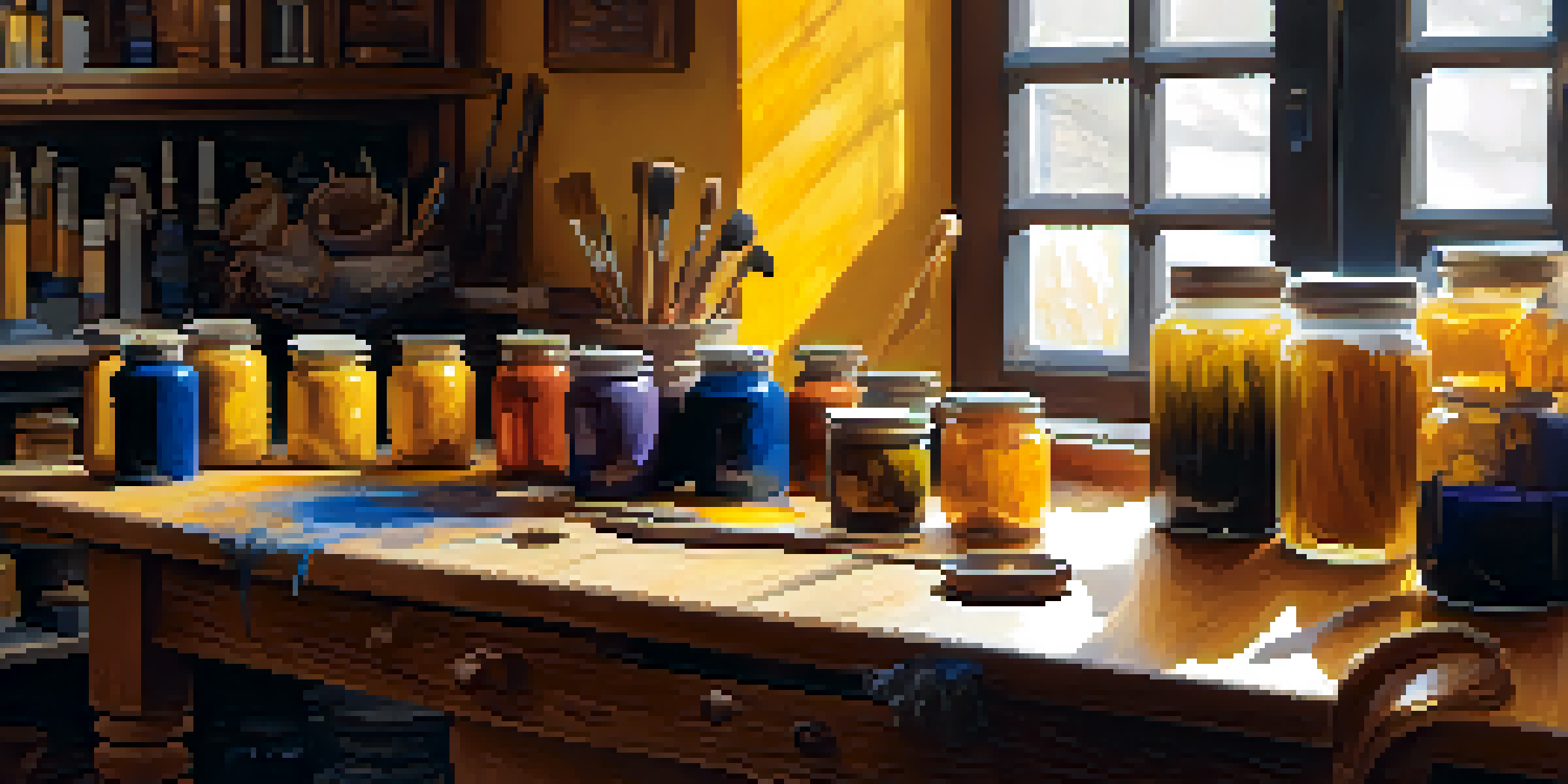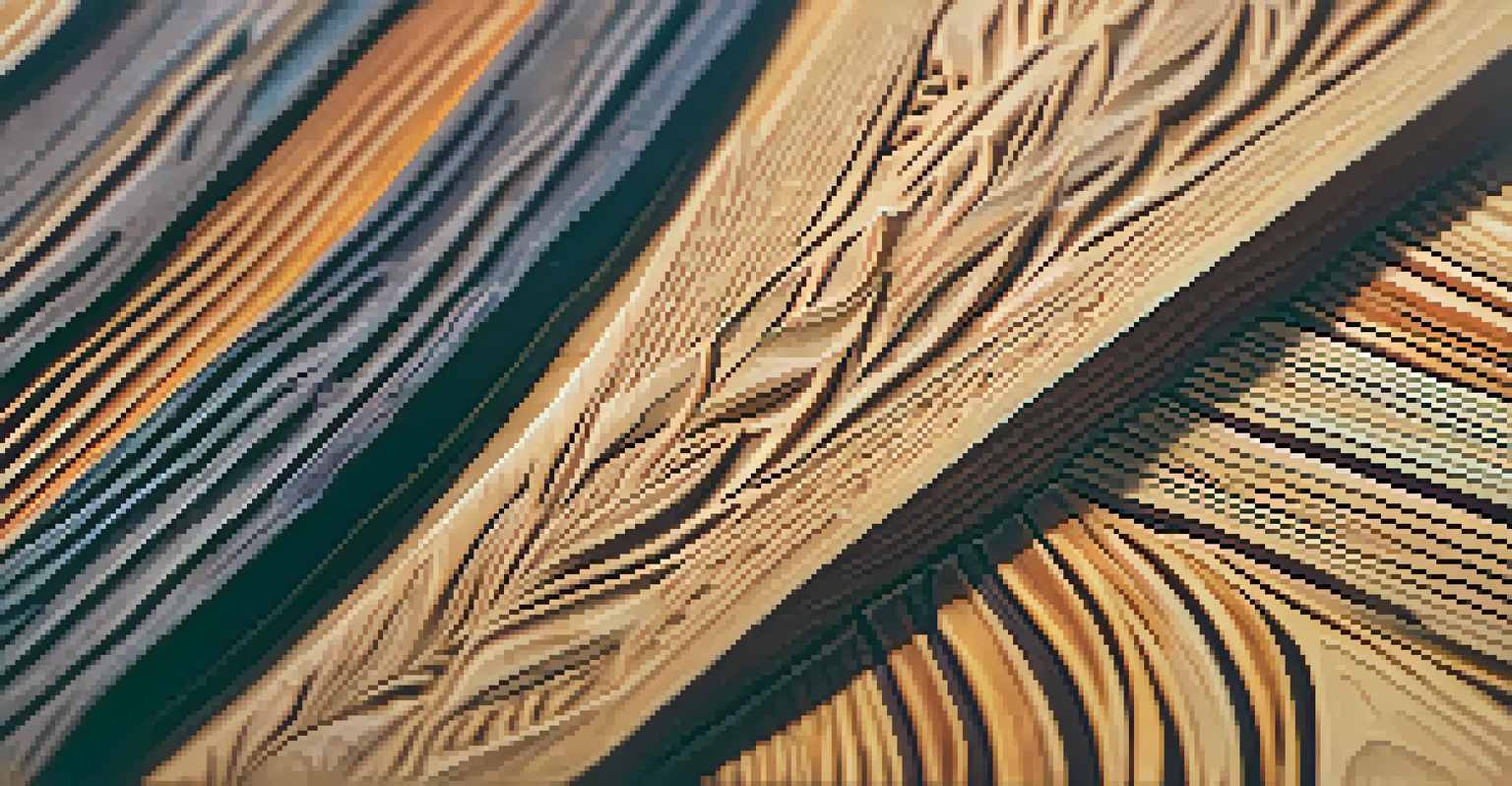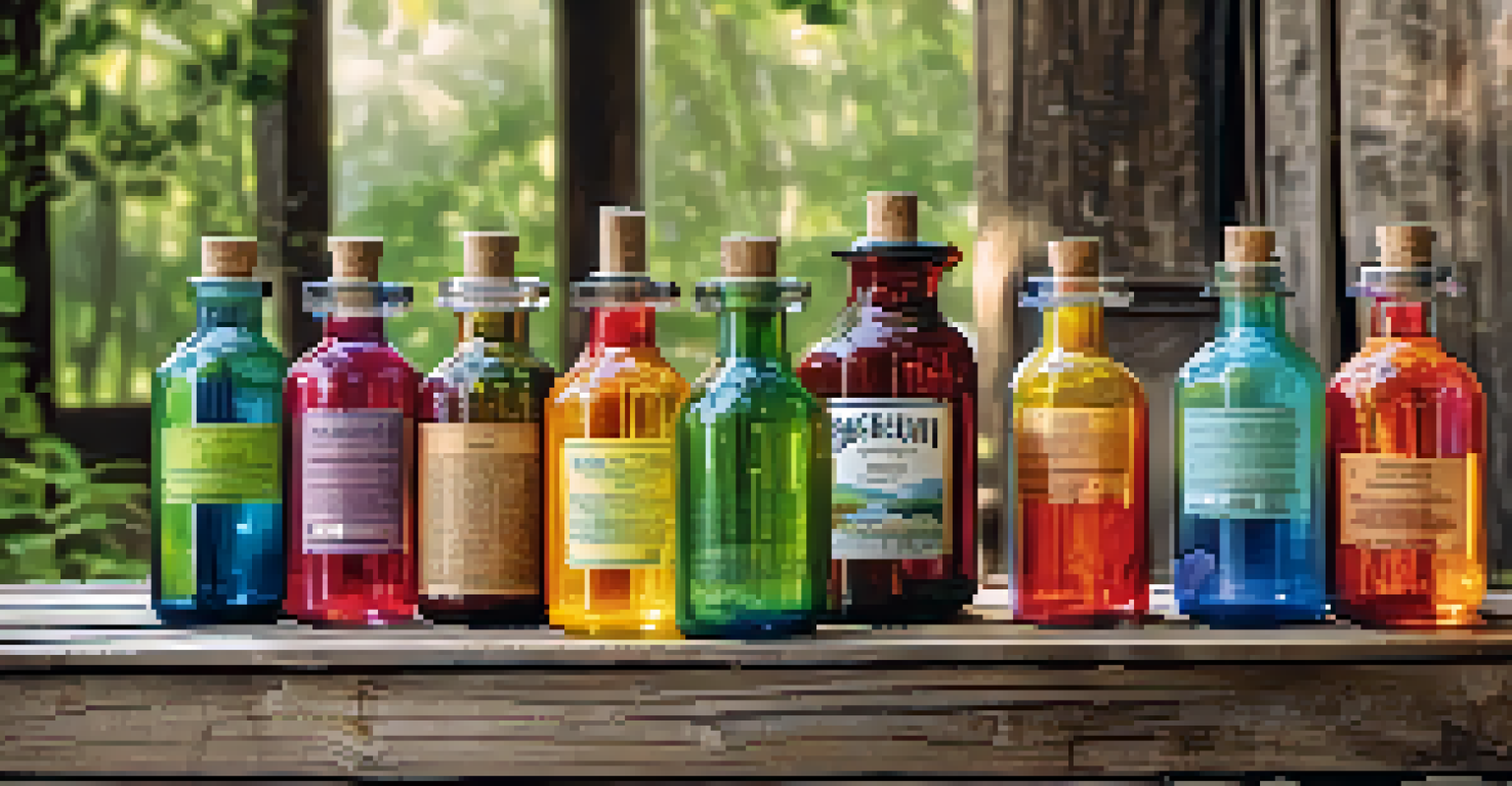Natural vs. Synthetic Dyes: Which is Best for Carving?

Understanding Natural Dyes and Their Benefits
Natural dyes are derived from plants, minerals, and insects, offering a rich, organic alternative to synthetic options. They are often celebrated for their environmental friendliness and the unique hues they produce, which can vary based on the source and method of extraction. For example, turmeric can yield a vibrant yellow, while indigo provides a deep blue shade. Artists often appreciate the depth and complexity these colors can bring to their carving projects.
Color is the keyboard, the eyes are the harmonies, the soul is the piano with many strings.
Moreover, natural dyes tend to have a lower environmental impact since they are biodegradable and typically involve fewer harsh chemicals in their production. This can be particularly appealing for those who prioritize sustainability in their work. By choosing natural dyes, carvers can create pieces that not only look beautiful but also align with eco-conscious values.
However, it's important to note that natural dyes can be less predictable than their synthetic counterparts. Factors such as water quality, temperature, and even the time of year can affect the final color outcome. This variability can be both a challenge and a creative opportunity, encouraging artisans to experiment and embrace the unexpected.
Exploring Synthetic Dyes and Their Advantages
Synthetic dyes are man-made and come in a wide array of colors, often providing more consistency and vibrancy than natural alternatives. For carvers looking for specific shades or effects, synthetic dyes can be a reliable choice, ensuring the final piece meets their vision. For instance, vibrant reds and blues can be easily achieved with synthetic dyes, offering a palette that can be more extensive than that of natural dyes.

Additionally, synthetic dyes often have superior lightfastness, meaning they resist fading over time when exposed to sunlight. This is particularly important for carved pieces intended for display, as colors that hold their brilliance can significantly enhance the overall aesthetic. With synthetic options, carvers can confidently create stunning pieces that maintain their appeal through years of exposure.
Natural Dyes: Eco-Friendly Choice
Natural dyes offer a sustainable alternative to synthetic options, derived from organic materials and minimizing environmental impact.
However, the production of synthetic dyes often involves harmful chemicals, raising concerns about their environmental impact. This can deter some artists who prioritize eco-friendly practices. Balancing the aesthetic appeal with environmental considerations is an important factor for many in the carving community as they choose their dyeing methods.
Cost Considerations: Natural vs. Synthetic Dyes
When it comes to cost, natural dyes can be more expensive due to the labor-intensive processes involved in their extraction and application. Sourcing natural materials, whether they be plant leaves or insects, can also drive up the price. For hobbyists or those working on a budget, this might make synthetic dyes a more appealing option. They are often widely available and can be purchased at a lower price point, making them accessible for projects of all sizes.
Art is not freedom from discipline, but disciplined freedom.
On the flip side, the investment in natural dyes may be justified by their unique qualities and the satisfaction of using eco-friendly materials. Many artisans find that the special characteristics of natural dyes, such as their depth and subtle variations, can elevate their work in ways that synthetic dyes cannot. This can lead to greater appreciation of the final pieces, potentially allowing for a higher selling price in the market.
Ultimately, the choice between natural and synthetic dyes often comes down to personal preference, budget, and the specific needs of the carving project. Carvers should weigh the initial costs against the long-term benefits to determine which dyeing method aligns best with their goals.
Color Fastness and Durability: Key Factors to Consider
Color fastness refers to how well a dye maintains its color over time when exposed to light and washing. Synthetic dyes generally excel in this area, providing a consistent, long-lasting vibrancy that can withstand the test of time. For carvers creating pieces that will be showcased or frequently handled, this durability can be a significant advantage, ensuring that the colors remain bright and appealing for years.
In contrast, natural dyes can sometimes fade more quickly, especially when subjected to harsh sunlight or frequent washing. This fading can be a concern for those looking to sell their carved items or display them prominently. However, many artists embrace the natural aging process, viewing the softening of colors as a part of the artwork's journey and character.
Synthetic Dyes: Consistency and Ease
Synthetic dyes provide vibrant colors and consistent results, making them a reliable choice for artists seeking specific shades.
When considering color fastness, it's essential to think about the intended use of the carved pieces. If they will be used outdoors or in bright environments, synthetic dyes might be the more practical choice. However, for indoor displays or projects where the natural aesthetic is prioritized, the charming imperfections of natural dyes might be just what the artist is looking for.
Application Techniques: A Closer Look
The application techniques for natural and synthetic dyes can vary significantly, influencing the choice of dye for a carving project. Natural dyes often require a mordant, a substance that helps fix the dye to the material, making the process a bit more involved. This can be a fun and creative part of the journey, as different mordants can yield varying results, allowing for exploration and experimentation.
On the other hand, synthetic dyes usually come ready to use, simplifying the process for artists who want to dive straight into their projects. They can be mixed easily and applied with various methods, such as spraying, brushing, or dipping, which can be particularly beneficial for intricate carvings. This ease of use can save time, especially for large-scale projects or when working under tight deadlines.
Ultimately, the choice of application technique can also reflect the artist's style and preferences. Some may relish the ritualistic nature of working with natural dyes, while others might appreciate the efficiency of synthetic options. Understanding these techniques can help carvers make informed decisions that enhance their artistic expression.
Environmental Impact: Weighing the Options
The environmental impact of dyeing methods is becoming increasingly important in today's crafting community. Natural dyes are often regarded as more sustainable, as they are derived from renewable resources and typically involve less harmful waste in their production. This aspect appeals to artists who are conscious of their ecological footprint and want their work to reflect their values.
However, it’s crucial to recognize that not all natural dyes are created equal. Some may require extensive water usage or lead to habitat destruction if not sourced responsibly. Therefore, artists should do their research and choose suppliers who prioritize eco-friendly practices. This ensures that their choice of natural dyes genuinely contributes to environmental sustainability.
Cost and Application Considerations
The choice between natural and synthetic dyes involves weighing cost, application techniques, and personal artistic goals.
On the other hand, while synthetic dyes may offer vibrancy and consistency, their production can involve toxic chemicals and pollutants. Many manufacturers are working to create more eco-friendly synthetic dye options, so it’s worth looking for these alternatives. Ultimately, every artist must weigh their options carefully, considering both the environmental implications and the artistic outcomes of their dye choices.
Making the Right Choice for Your Carving Projects
Choosing between natural and synthetic dyes ultimately depends on your personal preferences, artistic goals, and the specific needs of your carving projects. If you value sustainability and the unique qualities of natural materials, you might lean toward natural dyes despite their unpredictability and higher cost. This choice allows for a deeper connection with your materials and can result in one-of-a-kind pieces.
Conversely, if consistency, vibrant colors, and ease of application are your top priorities, synthetic dyes might be the way to go. They offer a reliable option, especially for projects that require a precise color palette or durability. Understanding your project’s requirements and your own artistic vision can help guide this decision.

No matter which path you choose, the most important thing is that you enjoy the process of creating. Whether you opt for the organic beauty of natural dyes or the bold colors of synthetic options, your carved pieces will reflect your unique style and creativity. Embrace the journey, and let your artistry shine through!